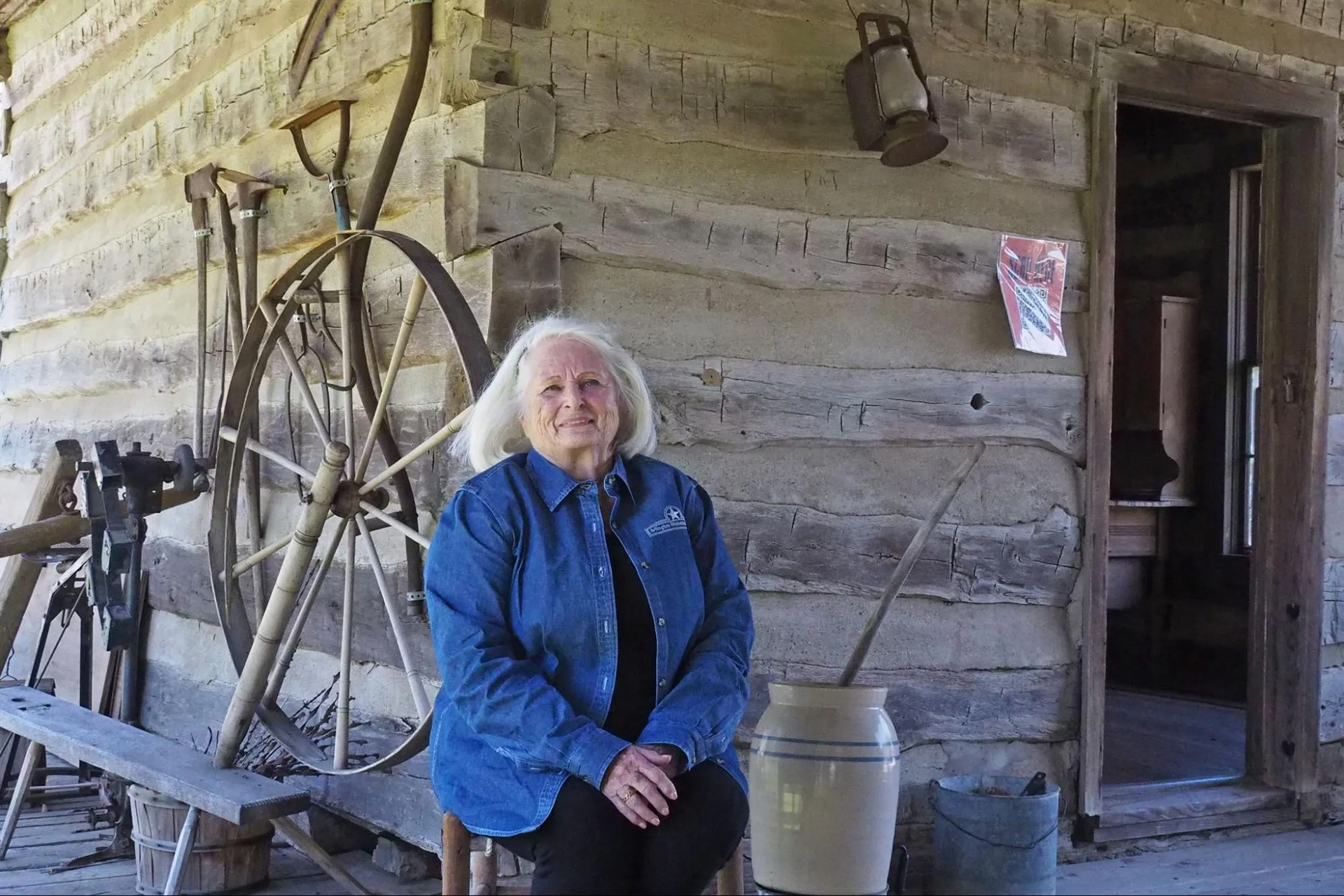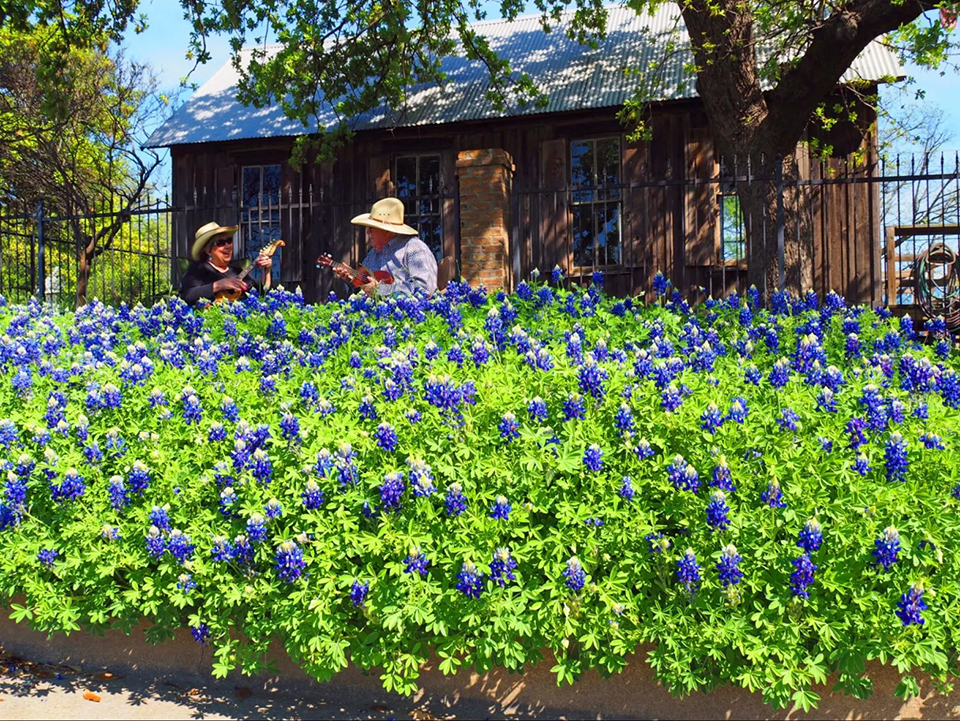
Who needs ‘Yellowstone’ prequels? Step back into 1800s at Knapp Heritage Park
Step through the gate of Knapp Heritage Park in downtown Arlington, and — if it’s your lucky day — you’ll be greeted by Nancy Tice and transported to another time, another way of life. An 1800s Texas pioneer way of life.
Tice wears a couple of hats in this regard, or maybe — given the historical context of this spot — that should be bonnets. She’s both the president of the Arlington Historical Society and the main tour guide/resident expert for the Knapp, located in the 200 block of West Front Street, a block north and across the railroad tracks from City Hall. Easy to find but often overlooked.
“Too many people drive by the park, gawking the whole time and probably wondering, ‘What is that?’ when they really should drop by for a look,” says Tice. “It’s a terrific combination of being both educational and interesting.”
Three cabins dominate the little hideaway park. Directly in front of the gate, a visitor sees the Jopling-Melear cabin, built by George Washington himself — that’s George Washington Jopling, not that father-of-the-country guy. In 1863, Jopling cleared a couple hundred oaks from along a nearby creek to build the log cabin near the stagecoach stop, the community of Johnson Station, long since absorbed by the city of Arlington as it swelled to its current hundred-square-mile size.
A Brief Overview of the Arlington Historical Society
The Arlington Historical Society, originally called the Cemetery Society, was founded on August 27, 1887, to promote, develop and support the process of collecting and preserving documents, pictures and historical information about the founding and growth of Arlington. The society maintains Knapp Heritage Park; the Fielder Museum, 1616 W. Abram St.; and Arlington Heritage Memorial Grounds, also known as the Col. Middleton Tate Johnson Plantation Cemetery, 600 W. Arkansas Lane. Side note: The colonel, a Mexican War hero, politician and, in the vernacular of the day, an Indian fighter, pal of Sam Houston and Texas Ranger, is considered the father of Tarrant County. He was also the county’s largest slave owner.
Tice, guiding a tour of a dozen University of Texas at Arlington art students, stops on the way to the cabin to a rounded concrete container, noting it was the original downtown mineral well bowl and horse trough.
“What mineral well?” one of the students asks.
That’s a story that spreads across six decades, but Tice boils it down to 90 seconds before continuing on the short journey under the watchful eyes of six feral felines who watch from assorted porches and benches. These are neutered Knapp cats, locally famous freeloaders who survive off feline fancier handouts, which must be generous. All of them look well fed.
“Can I pet them?” one of the students asks.
“I wouldn’t recommend it,” Tice says.
Inside the Jopling-Melear cabin, about 100 square feet, Tice delivers quick lessons on the technique of cording beds, spinning wheel how-to, hand-notched log cabin construction and how a couple of parents with eight kids found enough space for everyone to sleep. There’s a loft, Tice explains, hot in summer and cold in winter, but a place to settle in. Weather permitting, she notes, the kids could just sleep on the porch.

The Watson cabin, like the Jopling cabin, also has a state historical marker, but it’s a little different, a dog-run cabin, which is really two separate small cabins under one roof with open but covered space — maybe that dog run — between. Pioneer Patrick Watson built it in 1855 in what is now northeast Arlington, roughly at the point where Interstate 30 intersects Texas 360. Watson and his wife, Margaret, had six children. When she died, he married Margaret’s niece, subsequently fathering six more children.
“Must have been pretty crowded,” one of the students observes.
“Indeed,” Tice agrees, following up that bit of history with a brief schooling on a cream separator and its clever use of centrifugal force, butter churn technology, the science behind buttermilk, the workings of a wood-burning cook stove and the how-to of a foot-pedal-powered sewing machine.
If You Go...
• What: Knapp Heritage Park
• When: 1-4 p.m. Saturday-Sunday, and for special events
• Where: 200 block of West Front Street, Arlington
• For more information: (817) 460-4001 or (817) 992-9493; email fielderh@swbell.net
That’s followed by a brief trip past the water tower that belonged to the city’s first mayor, George Finger, to the most modern log cabin on the property — the 1910 North Side School. The little schoolroom was used only briefly but is furnished in 1900s-style with small school desks, slate boards instead of paper tablets, a wood stove, all set on plank floors. On occasion, Arlington school teachers bring their students for a day in the old school house to demonstrate the way things used to be.
Tice retrieves a copy of school marm rules as dictated in 1910 by the then relatively new Arlington Independent School District, created in 1902. The rules outline a list of chores teachers were expected to tackle, including cleaning, and notes unacceptable behaviors such as smoking, drinking and getting married while under school contract. Or even dating. And makes clear that they should be at home at night unless involved in school activities.
“For some people, the good old days were not so good,” Tice notes, as the students nod in agreement.
The tour is almost over, but there’s also a final stop — sometimes it’s the first stop — at the general store, a small houselike building that was once the office of barrister James “Big Daddy” Knapp a local legend. The general store is full of oddities, ranging from a wooden 1915 Maytag washing machine powered by a gas engine to a Hoosier spice cabinet, useful for keeping bulk supplies of commodities like flour, cornmeal, salt and coffee.
As the tour wraps up, Tice says, “It’s a great deal to take in, but definitely worth checking out.”

